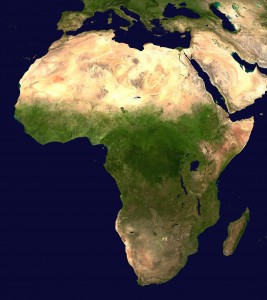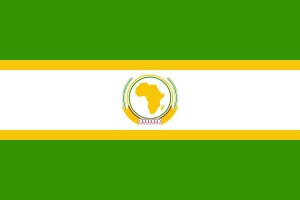 Population of Africa 2016
Population of Africa 2016
Based on the projected population by the year 2050 and the previous population, the population of Africa is estimated to reach 1.069 billion people in the year 2016. As a result, it still remains the second most populous continent in the world, but it makes up around 15% of the entire world. There are sixty-two nations and territories in the geographical region of Africa. Some of these countries are under the jurisdiction of European nations, but they are in the region of Africa. The country with the largest population in Africa is Nigeria, which was estimated to be just over 170 million in 2012. The country with the smallest population in Africa is Saint Helena, Ascension and Tristan da Cunha, which is a territory under the jurisdiction of the United Kingdom. As of 2012, this territory had just over 7,700 people. The territory is also the smallest in land area, totaling 420 square kilometers. Lastly, the Democratic Republic of the Congo has the largest total land area of African countries, totaling around 2,345,410 square kilometers.
Religion in Africa 2016
Throughout the continent of Africa, many villages and communities practice their own indigenous religious and traditions that have been around for centuries. However, the two major religions throughout the area are Christianity and Islam. Christianity happens to be the largest religion in Sub-Saharan African. The oldest Christian denominations in the continent are the Coptic Church in Egypt, the Ethiopian Orthodox , and the Eritrean Orthodox Church. Many early Christian leaders and figures originated in Africa and evangelized throughout the continent. The most Christian country is Cape Verde, where 99% of the population is Christian. Islam happens to be the largest religion in Northern Africa and the Horn of Africa. The most recent estimate is that 47% of the continent practices Islam and that approximately 25% of the world’s Muslims live in Africa. Islam was spread throughout Northern Africa through Islamic troops and Egyptian leaders. The majority of the Muslims in Africa are considered Sunni Muslims. There are three countries in the continent where all 100% of the population is Muslim: Mauritania, Sahrawi Arab Democratic Republic, and Somalia. Some minor religious communities in Africa include Judaism, Hinduism, Buddhism, Taoism, and many others. Lastly, there is also a decently sized irreligious, agnostic, or atheistic population in Africa.
Languages in Africa 2014
Africa is the most multilingual continent in the entire world. It is estimated that around 2,000 languages are spoken throughout the many countries. However, there are four major linguistic families that exist in Africa: Afro-Asiatic, Nilo-Saharan, Niger-Congo, and Khosian. The Afro-Asiatic family consists of about 240 languages spoken by around 285 million people, mainly in Northern Africa, the Horn of Africa, and Southwestern Africa. The Nilo-Saharan family consists of over a hundred languages spoken by over 30 million people, mainly in countries like Chad, Ethiopia, Kenya, and Nigeria. The Niger-Congo family is the largest linguistic family in the entire world, stretching over the majority of Sub-Saharan Africa. Lastly, the Khosian family consists of over fifty languages, mainly spoken in Southern Africa. Most Khosian languages are considered endangered. The origin of the term “Khosian” stems from the original inhabitants of this region of the continent, the Khoi and the San people. Some countries have adopted official languages that do not originate in the continent, such as Arabic and Spanish. Lastly, despite these major linguistic families in Africa, common languages like English and French are often used as official languages in the public sphere.
Geography of Africa 2014
The sixty-two nations and territories make up 11,725,385 square miles, which makes up the entire continent of Africa. Africa is mainly separated from the other continents due to bodies of water. The Mediterranean Sea separates Europe from Africa and the Red Sea separates a good portion of Asia from Africa. However, Africa is also separated from Asia by the Isthmus of Suez. The most northern point of the continent is Ras ben Sakka in Tunisia; the most southern point of Africa is Cape Agulhas in South Africa; the most eastern point is Ras Hafun in Somalia; and the most western point is Cape Verde. The distance from the most northern point to the most southern point is about 5,000 miles. The distance from the most eastern point to the most western point is about 4,600 miles. Africa is made up of approximately 16,000 miles of coastline.
There are two major geographic zones in Africa: the Atlas Range, the Coastal Plains, and the Plateau Region. The Atlas Range is located in the northwestern portion of the continent, running through Algeria, Morocco, and Tunisia. The highest point of this region is Toubkal in Morocco, reaching 13,665 feet. These mountains serve as a divider of the Mediterranean Sea and the Atlantic Ocean from the Sahara Desert. The Sahara Desert, ranging from the Atlantic Ocean to the Red Sea, is a part of the Coastal Plains. The Plains are also made up of various lakes, rivers, and basins throughout the continent. Lastly, the Plateau Region is made up of the South African Plateau, the East African Plateau, and the Ethiopian Highlands. The highest point in Africa, Mount Kilimanjaro, is found in the Plateau Region reaching 19,321 feet.
 African Union 2014
African Union 2014
The African Union is an organization of fifty-four African nations, united together in order to ensure the betterment and prosperity of all the African nations. The only (completely) African nation that is not a part of the African Union is Morocco, which left the Organization of African Unity (the organization prior to the AU) in 1984 due to the support given to the Sahrawi Arab Democratic Republic. There are currently three nations that are suspended members of the Union: Guinea-Bissau, Egypt, and the Central African Republic. All of these countries were suspended due to internal conflicts. The African Union officially launched on July 9, 2002 in South Africa after it was established on May 26, 2001 in Addis Ababa. The legislative power in the AU is called the Pan-African Parliament. It consists of 265 elected representatives from the members of the AU in order to help govern the nations democratically. Other than the Pan-African Parliament, the AU consists of a number of smaller bodies that help run the Union, including the Peace and Security Council and the African Central Bank, which is located in Abuja, Nigeria. Lastly, the African Union has been playing a major role in fighting the HIV/AIDS Epidemic in Africa.
Africa Poised for Population Boom
HIV/AIDS in Africa 2014
By the early 1960s, it was estimated that around 2,000 Africans were infected with HIV or AIDS. As of 2011, approximately 23.5 million people in Sub-Saharan Africa have been infected with HIV or AIDS. This means that 69% of all those living with HIV or AIDS lives in Sub-Saharan Africa. Also, 70% of those that died from AIDS in 2011 lived in Sub-Saharan Africa. However, in recent years, there have been major campaigns and efforts in order to figure out cures, preventions, and medications for those infected with HIV or AIDS. While the number of infected people may seem high, the number of people that died from AIDS in 2011 was 33% less than the number that died from AIDS in 2005. Also, the number of new HIV infections in Sub-Saharan Africa was 25% lower in 2011 than in 2001. There was an 805% increase in the number of people receiving anti-retroviral treatment in 2012 compared to 2005 from 1 million people to 7.1 million people. Some of the causes of the contraction and spread of the infection include unsafe sexual practices, drastic poverty, suspicion of Western medical practices, and expensive pharmaceuticals. Despite the large numbers of infected and dead as a result of HIV and AIDS, the world effort to combat this epidemic has made progress and will continue to make progress through the course of the next couple of decades.
Other Resources
Check out Africa Population 2013


